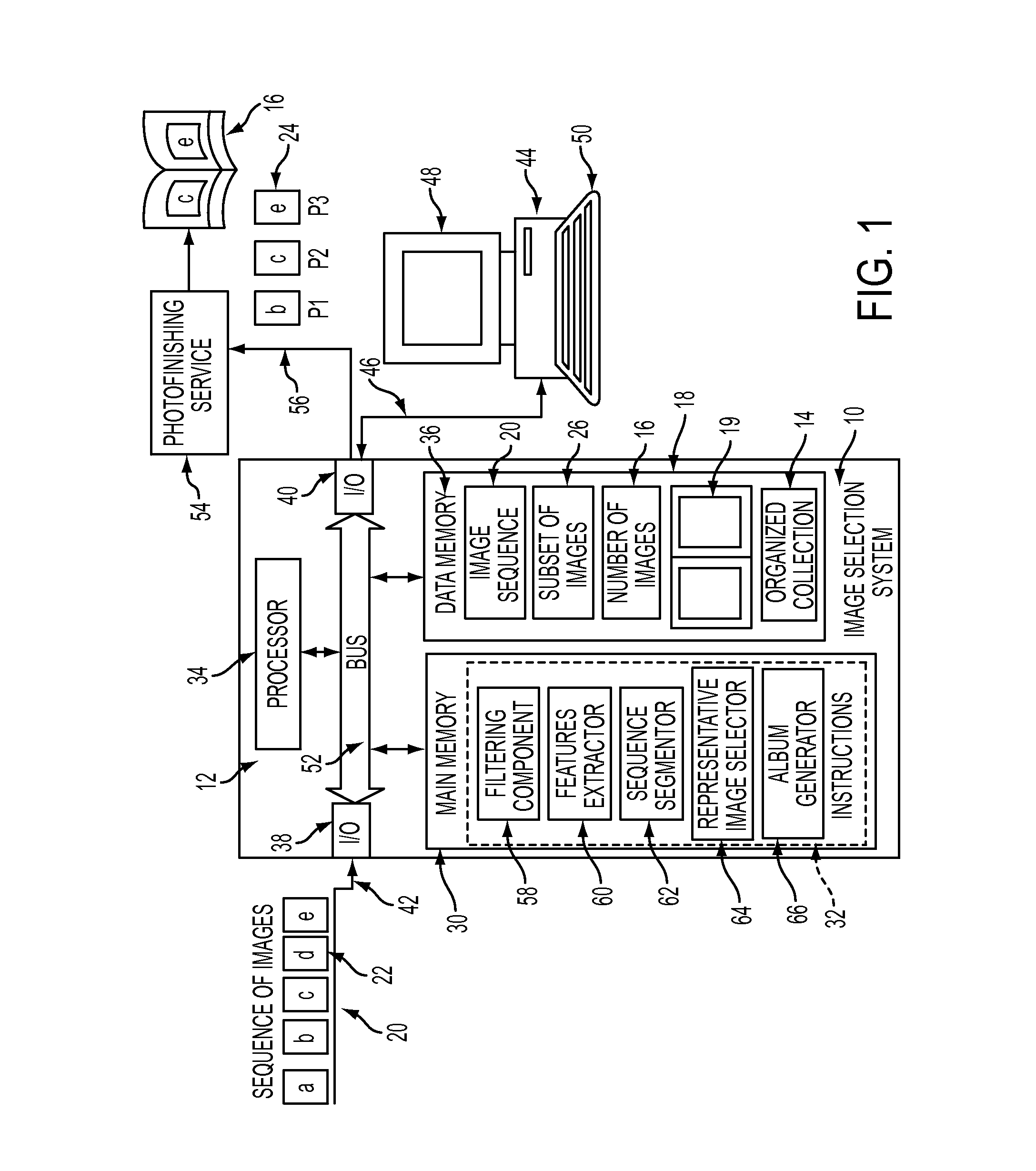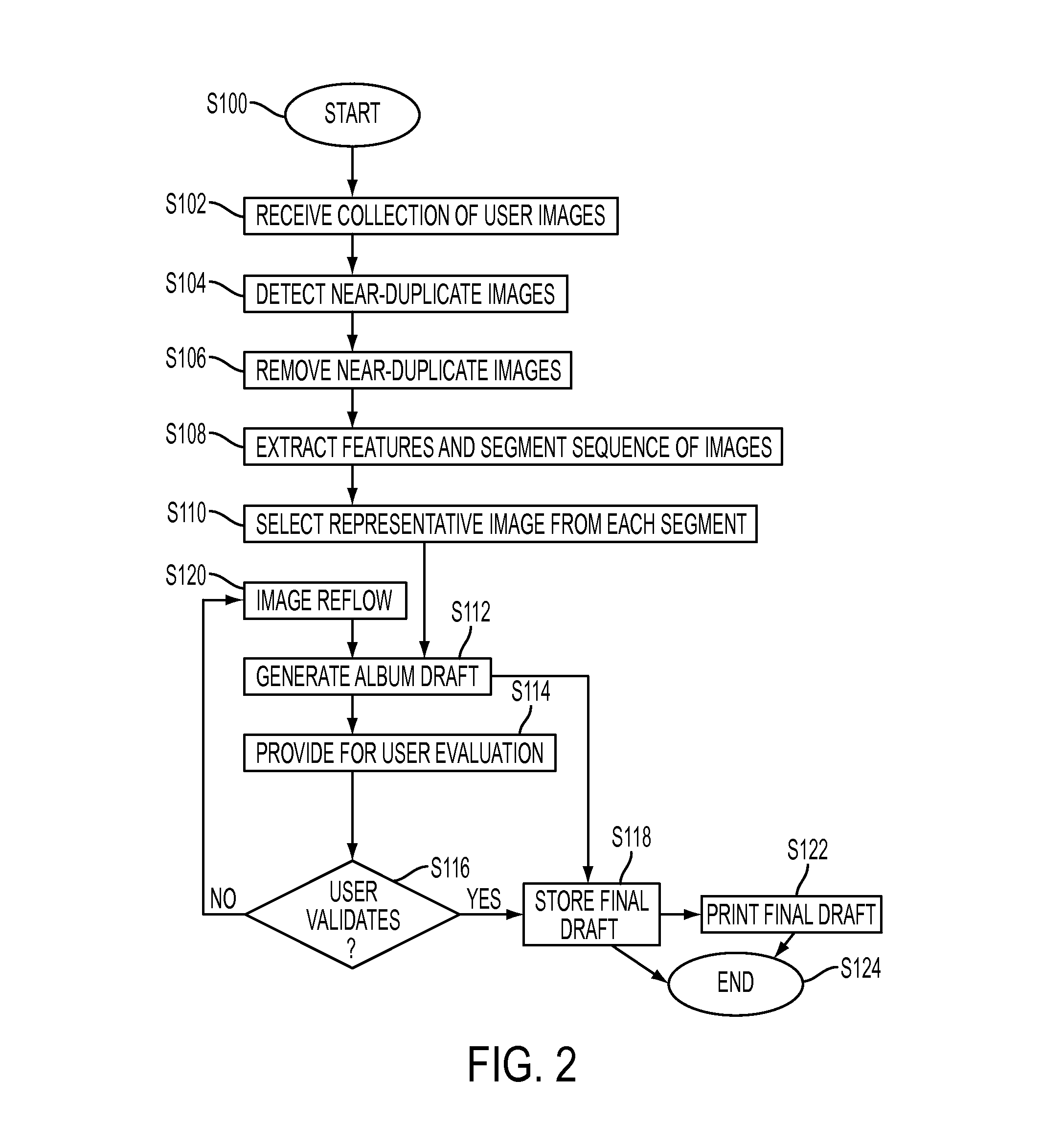System and method for image selection using multivariate time series analysis
a time series analysis and image selection technology, applied in still image data browsing/visualisation, instruments, computing, etc., can solve the problems of complex, multifaceted, time-consuming selection process for clients, etc., and achieve the effect of minimizing errors
- Summary
- Abstract
- Description
- Claims
- Application Information
AI Technical Summary
Benefits of technology
Problems solved by technology
Method used
Image
Examples
example 1
Segmentation of Images
[0113]Approximately 80 images were downloaded from an on-line Web album on the subject of tourism to serve as the input image set. In this example, no near-duplicates removal was performed. Five features were selected for the segmentation step: time-stamp, latitude, longitude, exposure, and focal length, and feature values were extracted from each image in the sequence. The feature values were normalized so that each feature had an average of 0 on a scale of −4 to +4.
[0114]In FIG. 5, the five profiles corresponding to features time-stamp, latitude, longitude, exposure, and focal length, respectively, are shown for part of the sample album. As it can be seen, these profiles share transition points (vertical dashed-lines). The results of group fused Lasso segmentation are identified by the dashed lines, the transition points. The step function which generated these transition points is shown to demonstrate the piecewise constant nature. As will be appreciated, th...
example 2
Pairwise Similarity Assessment and Near-Duplicates Removal
[0115]Experiments were performed with several strategies for assessing the visual similarity between adjacent images. Given an image representation xi the aim was to detect if the adjacent image Xi+1 is a near-duplicate or not. Three strategies were considered for spotting transition point between dissimilar images: static thresholding, dynamic thresholding, and non-linear classification as discussed above.
[0116]Table 1 shows the comparison of the performances for the Static Thresholding (ST-TH) method evaluated on a data-set of 4 albums on two different features: visual similarity (sim) and time-stamp (tim). Ground truth data was manually generated by identifying transition points between adjacent images for a total of 1873 images. Each pair of images was annotated with a binary value (1=near-duplicates, 0=change point / dissimilar images). In the following:
[0117]Fn=number of False negatives;
[0118]Fp=number of False positives;...
PUM
 Login to View More
Login to View More Abstract
Description
Claims
Application Information
 Login to View More
Login to View More - R&D
- Intellectual Property
- Life Sciences
- Materials
- Tech Scout
- Unparalleled Data Quality
- Higher Quality Content
- 60% Fewer Hallucinations
Browse by: Latest US Patents, China's latest patents, Technical Efficacy Thesaurus, Application Domain, Technology Topic, Popular Technical Reports.
© 2025 PatSnap. All rights reserved.Legal|Privacy policy|Modern Slavery Act Transparency Statement|Sitemap|About US| Contact US: help@patsnap.com



